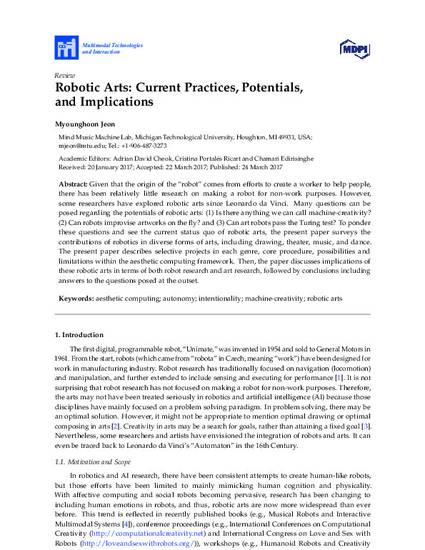
Given that the origin of the “robot” comes from efforts to create a worker to help people, there has been relatively little research on making a robot for non-work purposes. However, some researchers have explored robotic arts since Leonardo da Vinci. Many questions can be posed regarding the potentials of robotic arts: (1) Is there anything we can call machine-creativity? (2) Can robots improvise artworks on the fly? and (3) Can art robots pass the Turing test? To ponder these questions and see the current status quo of robotic arts, the present paper surveys the contributions of robotics in diverse forms of arts, including drawing, theater, music, and dance. The present paper describes selective projects in each genre, core procedure, possibilities and limitations within the aesthetic computing framework. Then, the paper discusses implications of these robotic arts in terms of both robot research and art research, followed by conclusions including answers to the questions posed at the outset.
Available at: http://works.bepress.com/philart-jeon/64/

Publisher's version of record: http://dx.doi.org/10.3390/mti1020005